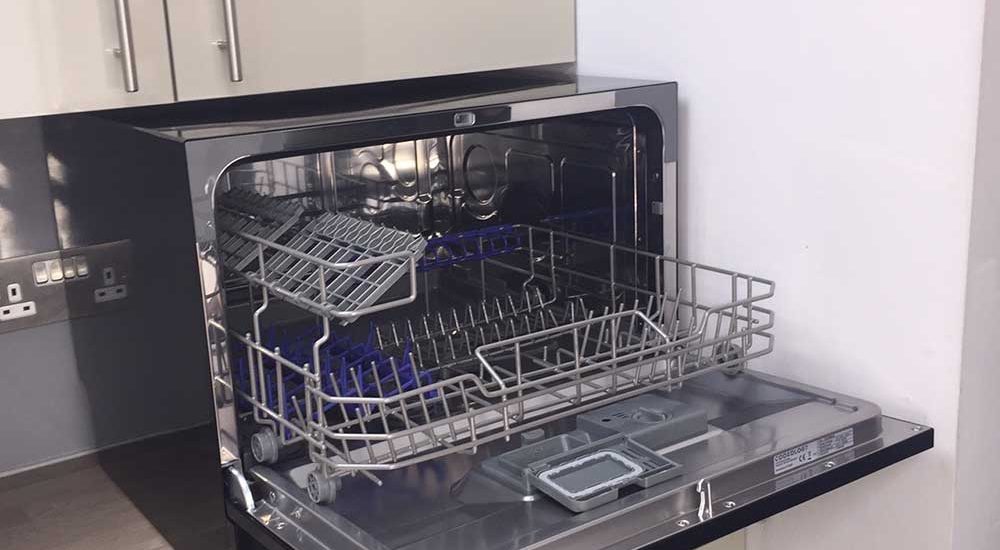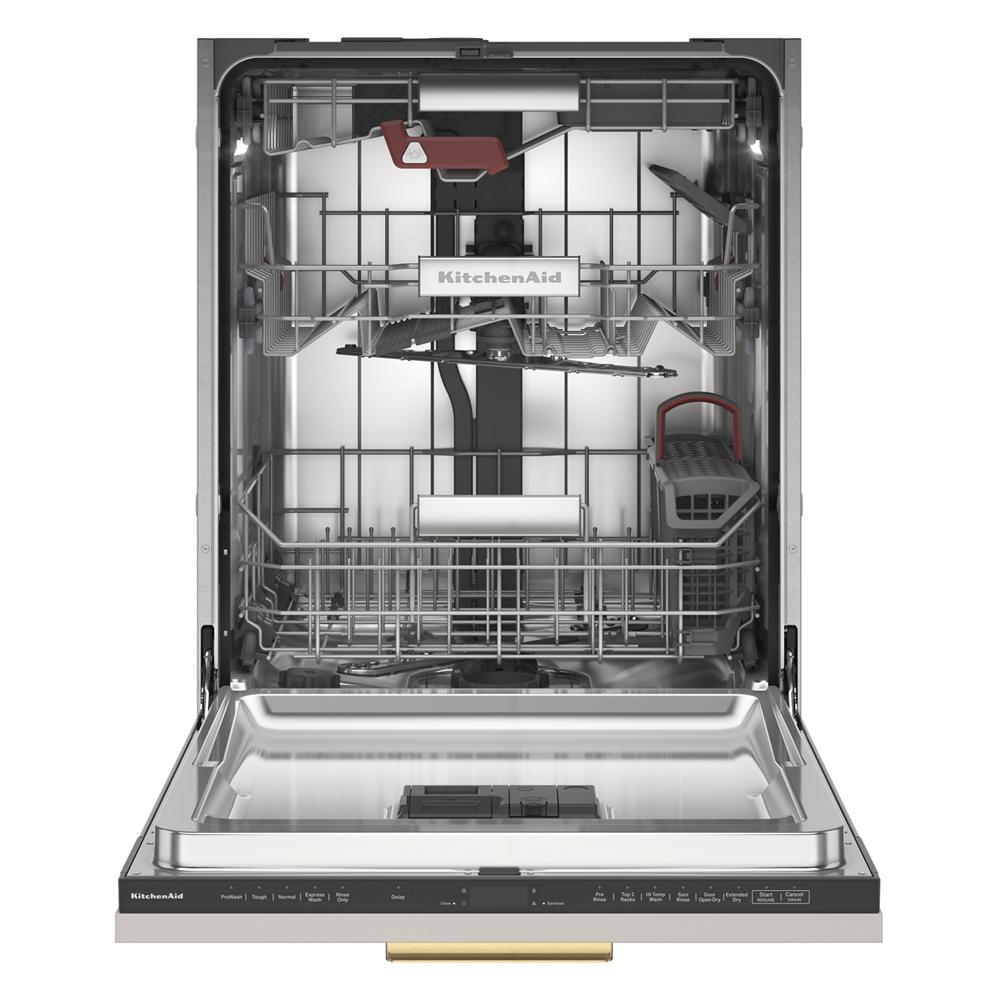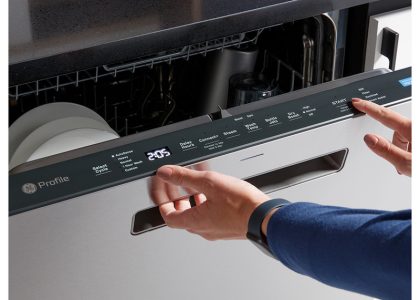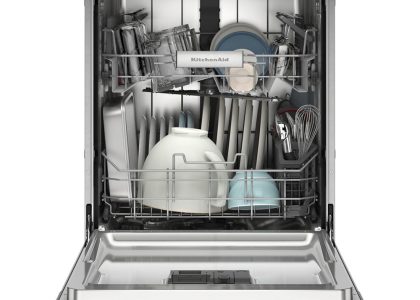Reasons to Reset Your KitchenAid Dishwasher
Understanding why your KitchenAid dishwasher might require a reset is key to resolving issues effectively. A reset can often fix minor glitches and restore your dishwasher to proper working order without the need for a service call.
Common Issues Necessitating a Reset
Several problems can lead to the need for a reset of your KitchenAid dishwasher. Common issues include the dishwasher not starting, not completing a wash cycle properly, or experiencing unusual pauses during operation. Over time, electronic appliances can encounter system errors, and a quick reset can help clear these up. In some cases, a simple power fluctuation or outage could have caused a malfunction that a reset may correct.
Signs Your Dishwasher Needs a Reset
There are a few telltale signs indicating that it’s time to reset your KitchenAid dishwasher. If you notice that the control panel is unresponsive, or if the dishwasher fails to start a cycle despite proper door closure and power supply, a reset might be necessary. Error codes flashing on the display or the dishwasher getting stuck mid-cycle are also clear signals that a reset could alleviate the problem. Lastly, if you have recently made changes to the settings and the dishwasher isn’t performing as it should, consider a reset to revert to default settings and resume normal function.
Preparing for a Reset
Before initiating the reset process for your KitchenAid dishwasher, it’s crucial to take some safety precautions.
Safety Precautions Before Resetting
Ensuring your safety is paramount when attempting to reset your KitchenAid dishwasher. Firstly, turn off the appliance to avoid any electrical hazards. This can be done by unplugging the dishwasher from the power outlet or switching off the circuit breaker. Always make sure your hands are dry and that you are not standing in water while performing the reset to prevent electric shock.
What You’ll Need to Reset Your Dishwasher
To effectively reset your KitchenAid dishwasher, you’ll need access to the power source and the dishwasher’s control panel. Gather the following:
- The owner’s manual for specific reset instructions.
- Access to the power socket or circuit breaker.
- A timer or clock to count the duration for which the power is disconnected.
Remember, the tools required are minimal, but attention to detail and adherence to safety protocols are vital for a successful reset.
Basic Manual Reset Instructions
Performing a basic manual reset of your KitchenAid dishwasher is straightforward. It is often the first step in the troubleshooting process when you encounter glitches.
Step-by-Step Guide to a Manual Reset
To reset your KitchenAid dishwasher manually, follow these simple steps:
- Power Off: Unplug your dishwasher or switch off the circuit breaker connected to it.
- Wait Period: Leave the appliance without power for about 1 to 2 minutes.
- Power On: Reconnect your dishwasher to the power source or turn the circuit breaker back on.
- Restart Cycle: Select a wash cycle and initiate the dishwasher to check if it’s functioning properly.
Remember to ensure the dishwasher is completely stopped before attempting this process.
When to Opt for a Manual Reset
Choose a manual reset in these scenarios:
- When your dishwasher fails to start a cycle.
- If you face interruptions during a wash cycle.
- After a power outage or electrical surge.
A manual reset is an easy fix that can often restore your dishwasher’s operation without further intervention. However, if issues persist after this procedure, further investigation or professional help may be necessary.
Cycle Reset Process
If your KitchenAid dishwasher needs a quick fix, trying a cycle reset can often help. This process targets the current cycle and doesn’t impact the whole appliance setting.
How to Execute a Cycle Reset
Executing a cycle reset is quite simple. Here’s how you do it:
- Press the Cancel Button: Hold the ‘Cancel’ or ‘Cancel Drain’ button for about five seconds.
- Wait for the Reset: The dishwasher should beep or show signs of resetting.
- Start a New Cycle: After the reset, pick a fresh cycle and press start.
This method is fast and convenient, especially if the dishwasher is stuck mid-cycle.
Situations Best Suited for a Cycle Reset
Not all dishwasher issues require a cycle reset. Here are situations where it’s appropriate:
- Dishwasher Paused Mid-Cycle: When your dishwasher stops unexpectedly.
- Minor Glitches: For minor malfunctions that don’t need a full reset.
- After Setting Changes: If changes made to settings don’t seem to work.
Using this selective reset process can save time and solve specific operational issues without changing broader settings. However, if the cycle reset doesn’t fix the problem, you might need to try the control panel reset method or seek professional help.
Control Panel Reset Method
When the basic manual reset or cycle reset does not solve the issues, the control panel reset method is your next step. This method is more comprehensive and aims to rectify deeper system errors within the dishwasher’s control panel.
Detailed Steps for a Control Panel Reset
To perform a control panel reset on your KitchenAid dishwasher, follow these clear steps:
- Ensure Door Closure: Make sure the dishwasher door is fully closed before you begin.
- Sequence Activation: Press the ‘hi-temp scrub’ button, then the ‘energy saver dry’ button in quick succession, five times each.
- Wait for the Reset: Allow the dishwasher to rest for 5-10 minutes. During this time, the dishwasher should flash its lights, indicating it’s in reset mode.
- Finalize the Process: Press the ‘Cancel/Drain’ button to end the reset cycle and commence a drain cycle. After that, the dishwasher should be ready to use again.
Performing these steps can reboot the entire system, offering a more thorough solution than the simpler reset options.
Troubleshooting Persistent Control Panel Issues
If your KitchenAid dishwasher still faces issues after a control panel reset, here’s what you can do:
- Consult the Manual: Verify the reset steps in the owner’s manual for any dishwasher-specific instructions.
- Check for Error Codes: Observe if any error codes reappear and consult the manual or online resources for solutions.
- Ensure Proper Power Supply: Inspect your home’s electrical setup to confirm that the dishwasher is receiving steady power.
- Professional Assessment: If problems continue, it may be time to call a qualified technician for a detailed inspection and potential repairs.
Dealing with persistent control panel issues quickly is vital to prevent further damage and ensure your dishwasher runs smoothly.
Post-Reset Considerations
After you have reset your KitchenAid dishwasher, it’s crucial to observe how it performs. If the reset was successful, your dishwasher should resume normal operations. However, if the dishwasher does not respond to the reset or if you have ongoing problems, further actions are needed.
What to Do If Your Dishwasher Does Not Respond to a Reset
If your KitchenAid dishwasher does not respond after a reset, try the following:
- Check Power Source: Ensure the dishwasher is properly plugged in and receiving power.
- Inspect Door Latch: A faulty door latch will prevent the dishwasher from starting. Check to see if it engages correctly.
- Re-attempt Reset: Perform the reset process again to ensure no step was missed.
- Consult Manual: Refer to your user manual for troubleshooting sections that may address this issue.
- Seek Professional Help: If the dishwasher remains non-responsive, contact a repair technician.
How to Handle Recurring Error Codes
Recurring error codes in your KitchenAid dishwasher are signs of persistent problems. When error codes appear repeatedly, consider the following actions:
- Note the Error Code: Record the exact code as it appears.
- Check Manual: Look up the code in your dishwasher manual for specific guidance.
- Address the Issue: If the manual suggests an action, such as checking filters or hoses, do so.
- Avoid DIY Repairs: If the code suggests complex issues, do not try to fix it yourself.
- Professional Diagnosis: Consult a technician for a proper diagnosis and repair.
It’s important to understand what each error code means to take the right action. Always prioritize safety and accurate diagnosis when tackling dishwasher issues.
Frequently Asked Questions About Dishwasher Resets
Clarifying Common Dishwasher Reset Queries
Resetting your KitchenAid dishwasher might raise a few questions. Simple answers to these can help you handle the process smoothly.
- Why won’t my dishwasher start after a reset? Check the power connection and ensure the door is shut tight.
- Do I need to repeat a reset if an error code shows up again? Yes, it’s worth a try, but persistent error codes often signal deeper issues.
- How often should I reset my dishwasher? Only when you notice glitches or issues with performance; it’s not needed regularly.
- Will I lose custom settings after a reset? A basic or cycle reset should not affect saved settings. However, a control panel reset might.
- Can a reset fix all dishwasher issues? Not always. Some problems may need professional attention.
Seeking Professional Help for Technical Issues
When a reset doesn’t solve the problems, or you encounter complicated issues, professional help is the next step.
- Persistent Error Codes: If codes keep appearing, a technician should check it out.
- Water Leaks: Leaks can be tricky and risky; get expert assistance.
- Electrical Issues: For malfunctions that seem electrical, don’t risk DIY; call a pro.
- Mechanical Sounds: Strange noises usually require technical know-how to fix.
Remember, safety comes first, and when in doubt, always seek professional help to maintain your dishwasher’s longevity and performance.








